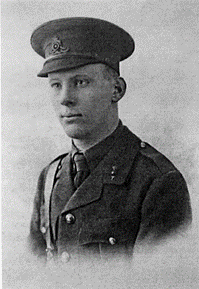Fact file:
Matriculated: 1909
Born: 15 May 1890
Died: 27 March 1916
Regiment: Royal Field Artillery
Grave/Memorial: Railway Dugouts Burial Ground (previously Transport Farm): III.E.13.
Family background
b. 15 May 1890 in Oldham as the elder son (of four children) of Samuel Radcliffe Platt, DL, JP (1845–1902), and Helen Ma[r]y Hodder Platt (née Roberts) (1863–1926) (m. 1884); at the time of the 1881 and 1891 Censuses the family were living at the big house known as Werneth Park, Oldham (11 and 15 servants respectively, including, in 1891, Butler and Yacht Steward); by the time of the 1911 Census it had moved to Youlston Park, Shirwell, near Barnstaple, Devon (11 servants, including a German governess); it finally moved to New Place, Sunningdale, Berkshire.
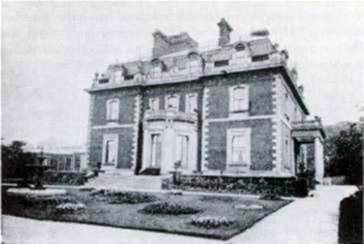
Platt’s Lodge, Werneth Park, Oldham.
Parents and antecedents
Samuel, Platt’s father, was a scion of the firm that became the world’s most successful textile machinery manufacturer during the second half of the nineteenth century and he receives much of the credit for that success (1860–1902). The firm’s history began in the late eighteenth century in Dobcross, Saddleworth, to the east of Oldham, where Platt’s great-great-great-grandfather, Henry Platt [I] worked as a blacksmith making carding equipment. The company’s rise to prominence began in 1821 when Platt’s great-grandfather, Henry Platt [II] (1793–1842), established Platt Bros in the “Old Works” in Huddersfield Road, Oldham. In 1844, Henry [II]’s son, John Platt (1817–72), moved the company’s headquarters to the “New Works”, a massive complex of buildings and internal railways in the Wentworth area of Oldham on a site overlooking Manchester. Here, by the time of his death, it was employing 6–7,000 people, a number which increased to 15,000 by the 1890s. This number was twice that of their nearest rivals, Dobson & Barlow in Bolton and Asa Lees on Greenacres Moor, and represented over 40 per cent of Oldham’s population. The company gained awards for its products from all over the world and its owners were heavily involved with local politics. John Platt was one of the largest subscribers for enabling Oldham to rise from a township and become a Borough, and in 1854–55 he became the fourth Mayor of Oldham, an office that he held twice more (1855–56 and 1861–62). In 1865 he was elected the Liberal MP for Oldham; he was re-elected in 1868, and he remained in office until his death in 1872. John Platt was the grandfather of both John Rookhurst and Lionel Sydney Platt, making them cousins.
Of John Platt’s six sons and six daughters, only his second son, Samuel, John Rookhurst Platt’s father, took any great interest in the family firm. The others, including the sixth son, Lionel Sydney Platt’s father Sydney, seem to have led lives of wealth and leisure. But Samuel was very gifted mechanically and entered the family firm in 1862, aged 17, where his rise was meteoric. He became a partner in 1867, aged 22, the firm’s Director in 1868, aged 23, and its Chairman in 1872, aged 27. Samuel Platt believed in promoting able employees to senior positions, in imaginative expansion, in investing in technical education and research, and in energetic marketing abroad. By 1878 the company had reached unrivalled prominence, was supplying machinery for turning fibre into yarn, fabric and textiles all over the world, and had made Oldham the centre of cotton spinning in Lancashire. During the period 1873 to 1902 the company’s profits averaged 11.4% p.a. and its dividends 18% p.a., reaching a peak of 37% in 1876–77; during the period 1903–74 its dividends averaged 9.5% p.a. and reached higher peaks in 1891–92 and 1926.
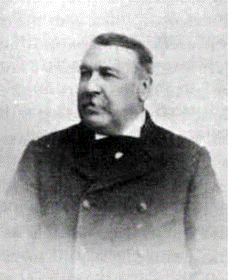
Samuel Radcliffe Platt (1845-1902).
Samuel was on Oldham Borough Council 1882–92, a Director of the Manchester Ship Canal 1885–91, Mayor of Oldham 1887–88 and one of Oldham’s three representatives on the executive board of the Engineering Employers Federation (established 1896). He became a magistrate in 1873 and a Deputy Lieutenant of Lancashire and High Sheriff of that county in 1897. He was a Knight of the Legion of Honour; a Knight of Grace of the Order of St John of Jerusalem; a confirmed Anglican and politically a Liberal; he was also a patron of cricket, music and the theatre. World War One cost the lives of four members of the family: Platt, his younger brother Maurice (q.v.), his cousin Lionel Sydney, and his maternal uncle John Charles Spencer-Warwick (see L.S. Platt). Samuel died, following surgery, aboard his yacht Norseman, leaving his sons £200,000 each and his daughters £100,000 each.
Siblings and their families
Brother of:
(1) Alice (Angela or “Angel”) Ma[r]y (1885–1973); later Radcliffe-Platt by deed poll; then Brownlow after her marriage in 1909 to Francis Cecil Brownlow (1870–1932); three children;
(2) Maurice Cedric (later Temporary Sub-Lieutenant RNVR) (1892–1918); died while interned in Holland on 16 November 1918, serving as a Sub-Lieutenant with the Hawke Battalion in the 63rd (Royal Naval) Division;
(3) Nancy Quenelda (1895–1993).
Francis Cecil Brownlow was a stockbroker’s clerk and the youngest son of Charles Brownlow, 2nd Baron Lurgan (1831–82).
Maurice served as a Temporary Sub-Lieutenant with the Hawke Battalion, one of the four battalions, all named after admirals, of the 1st Brigade, the 63rd (Royal Naval) Division, that was formed at the outbreak of war from members of the Royal Navy who were not needed at sea. The Battalion embarked at Dover on 4 October 1914 and arrived in Antwerp on 6 October, where it joined the Royal Marine Brigade in the trenches as part in the abortive defence of that port. On 9 October most of the Division withdrew to St Gilles Waes in Belgium and began entraining for Ostend. But about 1,500 men of the 1st Brigade, including Maurice, failed to cross the River Scheld, crossed into Holland and were interned there on 10 October 1914. Maurice was allowed to return to England on parole from 9 May to 9 June 1916, but on 26 November 1918, two weeks after the Armistice, he died in The Hague of heart failure following pneumonia and his body was brought back to England for burial.
Nancy Quenelda never married, became immensely rich, and left £8.25 million, of which £234,500 went to 18 charities.
Education and professional life
Platt attended Cheam Preparatory School, near Epsom, Surrey, from c.1897 to c.1901 (cf. G.T.L. Ellwood, A.G. Kirby, L.S. Platt, A.F.C. Maclachlan, R.N.M. Bailey, E.W. Benison, C.P. Rowley). Founded in c.1645 by the Reverend George Aldrich (1574–1658), it moved to nearby Tabor House in 1719, where it stayed until 1934 when it moved to its present site at Headley, Hampshire. It was sometimes known as Manor House Preparatory School because that, according to the Censuses, was the proper name of its buildings, and sometimes, from 1856, as Mr R.S. Tabor’s Preparatory School, when the Reverend Robert Stammers Tabor (1819–1900) became its Headmaster (until 1890) and set about turning it into a proper preparatory school and, arguably, the top preparatory school in the country. Platt then transferred to St Dunstan’s School, Epsom, Surrey, from c.1901 to 1904 before attending Eton from 1904 to 1909, where his only distinctions were to become Captain of the Oppidans in 1909 and a member of “Pop”.
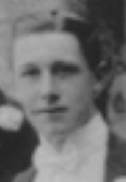
John Rookhurst Platt (detail from a group photograph of “Pop” at Eton [1909]).
He was a Commoner at Magdalen from 1909 to 1912 and was awarded a 3rd-class degree in Modern History in 1913, the year in which he took his BA. An avid golfer, he won the Amateur Championship at Baden-Baden in August 1912 and played against Cambridge in 1913. President Warren wrote of him posthumously:
He “came in on the History Demyships,” showing himself the best classical scholar in the competition. He had distinct ability both for languages and history. The attractions of a good time, the prospect of a good income, and the seductions of golf, however, militated against his Schools [Oxford’s final examinations], and those who knew him were well aware [that] he could do much more intellectually than he achieved here […] Had he been spared[,] it is clear that he would have made first a fine soldier and later a very useful civilian. Always pleasant and quick-witted, he had [by the time of his death] gained evidently the deepening and strengthening of character which was what he wanted to go far and achieve much. […] a real loss, it may be said without exaggeration […] to the Empire.
After leaving Magdalen, he was adopted as prospective Unionist candidate for Oldham and showed real promise as a platform speaker.
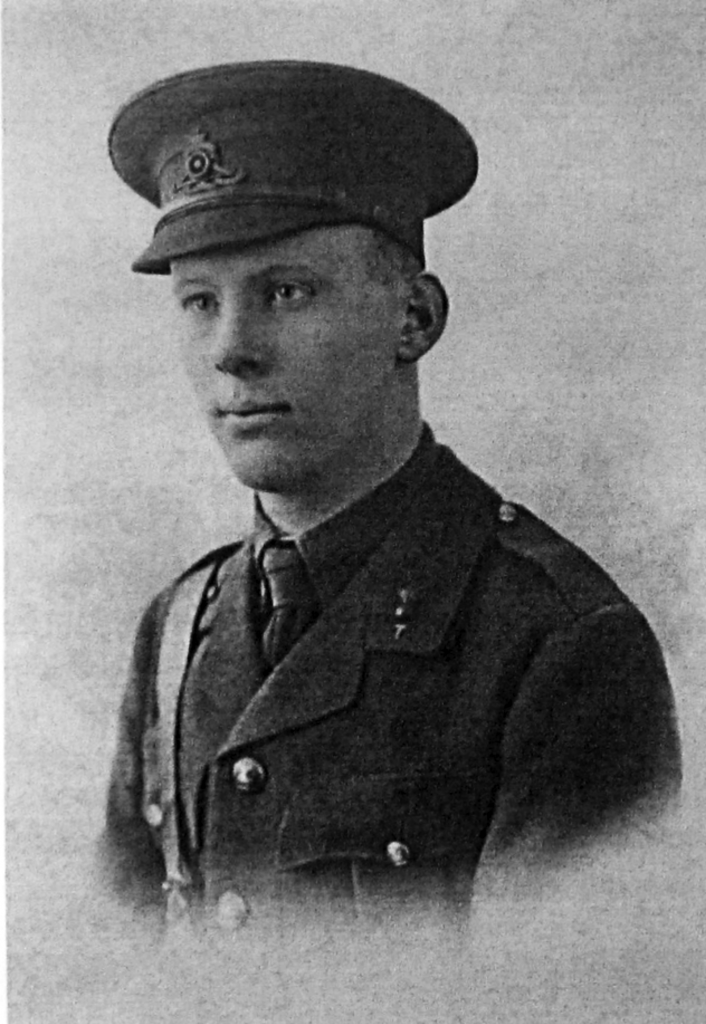
John Rookhurst Platt, BA
(Photograph courtesy of Magdalen College, Oxford).
War service
Platt served in the Royal Field Artillery (RFA), 2nd Durham Battery, 3rd Northumbrian (County of Durham) Brigade (Territorial Force); and later the 252nd Brigade, RFA. He was promoted 2nd Lieutenant on 5 October 1914 (London Gazette, no. 28,976, 16 November 1914, p. 9,385), and Lieutenant on 13 April 1915 (LG, no, 29.373, 19 November 1915, p. 11,489). He and his Battery arrived in Le Havre on 19 April 1915 and reached Le Temple, to the south of Ypres near Steenvoorde, by 28 April. The Battery first saw action on 24 May when it fired against a major German attack. From 7 to 22 June the Battery was positioned on the south side of Zillebeke pond, near Kruisstraat, and then, from 23 to 30 June, at Neuve Église, where it remained until 18 July. From 19 July to 15 August it was positioned at Pont de Nieppe, with its Brigade Headquarters in Armentières, firing at infantry trenches and artillery positions. It spent the period from 16 August to 24 October 1915 at Houplines, before moving to billets south-west of Bailleul with its Brigade HQ in Noote Boom. During the summer, Platt must have served primarily as a Forward Observing Officer (FOO), for the unit’s War Diary noted retrospectively that he and 2nd Lieutenant E.R. Bastell had “both done splendid work [as FOOs] in identifying targets and maintaining the good feeling and confidence of the Infantry”.
On 1 November 1915 the whole Brigade moved to Noote Boom, where, on 25 November, it exchanged its cumbersome ex-naval 4.5-inch guns for smaller 18-pounders. It stayed here until 17 December, moved to Hondeghem, and by 21 December had taken up firing positions at Kruisstraat, where it remained until 5 April 1916. On 27 March 1916 Platt was acting as FOO beside Hill 60, a strategic vantage point that claimed the lives of A.H. Huth, T.E.G. Norton, G.U. Robins, R.H.P. Howard and G.F.W. Powell. He was plotting shell fire when his group of men was hit by a high-explosive shell. He and Corporal J.A. Shaw were severely wounded and died of wounds received in action the same day, aged 25 and 21 respectively. His Colonel had recommended him for the Military Cross only a month before.
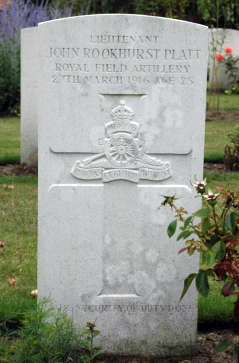
Railway Dugouts Burial Ground; Grave III.E.13.
Platt is buried in Railway Dugouts Burial Ground (south-west of Ypres); Grave III.E.13, with the inscription “In the security of duty done”. He is also commemorated in St John the Baptist Parish Church, Windlesham, Surrey, and on the War Memorial there. He left £234,559 8s 3d, of which £4,000 went to his friend Lieutenant John Churchill Craigie, who was in the Grenadier Guards and survived the war. The remainder was formed into 35 shares and divided up between his mother (16 shares), his sister Alice (six shares), her children in the form of a Trust (six shares), his Aunt Evelyn (one share), and his two first cousins Samuel and Frank Radcliffe (three shares each). Samuel Radcliffe was a Major in 172nd Brigade RFA, and was awarded the DSO in January 1918 for his part in the capture of Jerusalem, but he was killed in action on 30 April 1918, aged 33, and is buried in Kantara War Cemetery, Egypt.
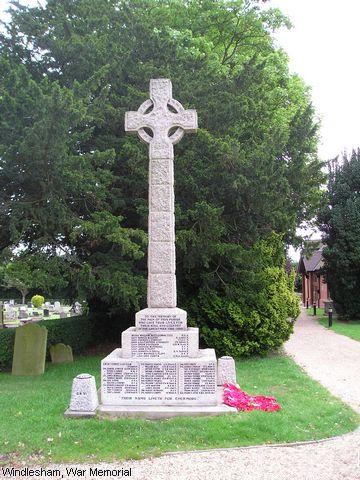
Windlesham War Memorial, Surrey.
Bibliography
For the books and archives referred to here in short form, refer to the Slow Dusk Bibliography and Archival Sources.
Special acknowledgements:
*D.A. Farnie, ‘Platt family (per. c.1815–1930)’, Oxford Dictionary of National Biography, 44 (2004), pp. 535–43 (esp. pp. 536–9).
Printed sources:
[Thomas Herbert Warren], ‘Oxford’s Sacrifice’ [obituary], The Oxford Magazine, 34, no. 17 (5 May 1916), p. 284.
Edward Peel, Cheam School from 1645 (Gloucester: The Thornhill Press, 1974), passim.
Leinster-Mackay (1984), pp. 29, 40–2, 107, 114, 135.
Walter O. Prestwich, A Story of Platt Brothers of Oldham (Kenilworth: Privately printed, 1986).
Duncan Gurr and Julian Hunt, The Cotton Mills of Oldham (Oldham: Oldham Arts and Heritage Publications, 1989).
R.H. Eastham, Platts: Textile Machinery Makers (Oldham: Publishers, 1994).
Archival sources:
ADM339/3 (Maurice Cedric Platt RNVR).
WO95/2817.
On-line sources:
Stanwardine, ‘Lieutenant John Rookhurst Platt’: http://www.stanwardine.com/genepic/John_Rookhurst_Platt.pdf (accessed 25 November 2019).
Stanwardine, ‘Captain Lionel Sydney Platt – 17th Lancers & Royal Flying Corps’: http://www.stanwardine.com/genepic/platt_lionel_sydney_rfc.pdf (accessed 25 November 2019).
Wikipedia, ‘Platt Brothers’: https://en.wikipedia.org/wiki/Platt_Brothers (accessed 25 November 2019).
